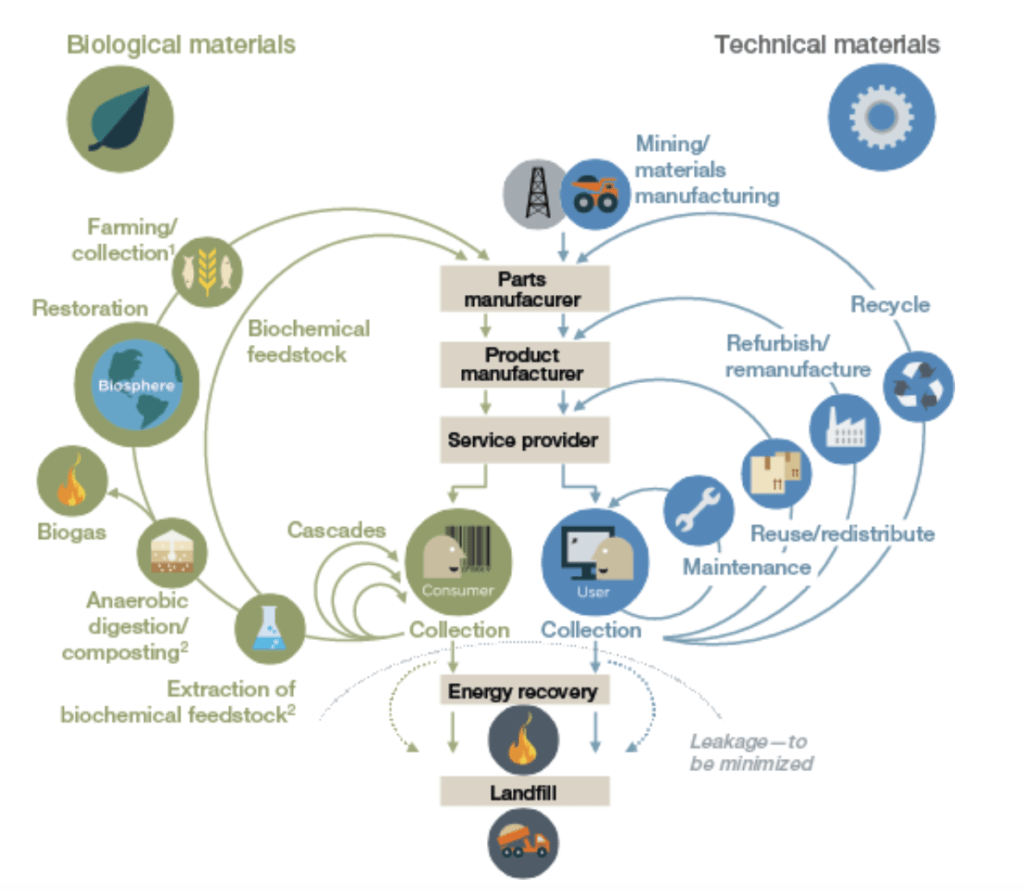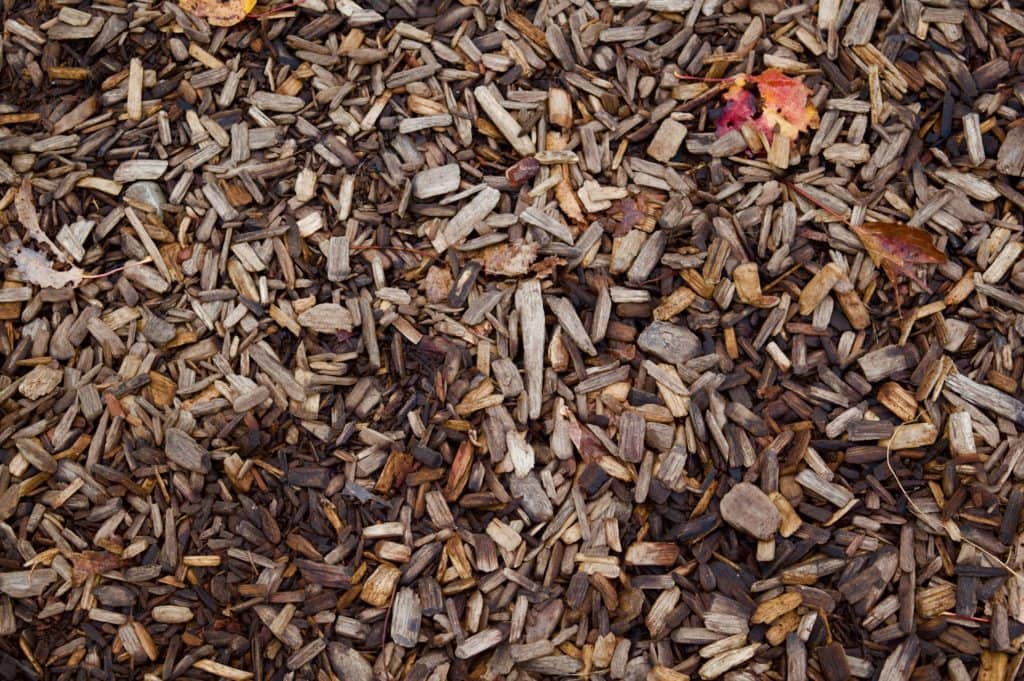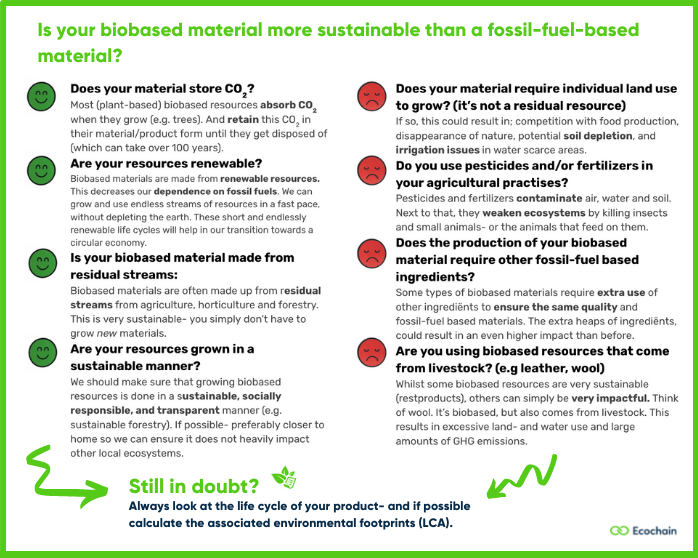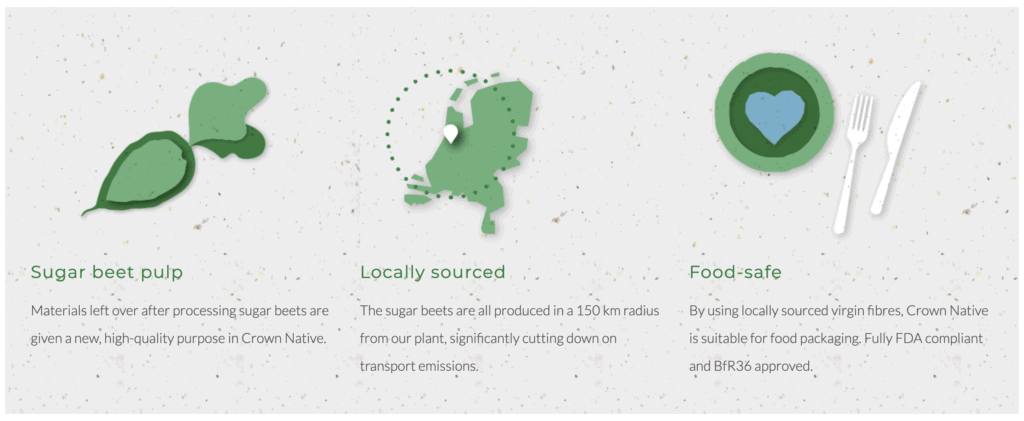Biobased materials are either completely or partly made from natural materials, they are renewable, and they even absorb CO2.
“Natural” materials sound more sustainable. But is that really the case? Is biobased really better for the environment?
First: what does ‘biobased’ actually mean?
‘Biobased’ specifies the source of materials. It refers to materials that are made from renewable resources and consist at least partially of biological materials. Think of fibers, sugar(s), microorganisms, or proteins.
Because biobased materials are renewable, they need to be able to grow back naturally and do so within a short-term period (generally 10 years).
Whilst fossil fuel-based materials disrupt the natural cycles on earth- biobased materials are actually part of our natural cycles. Meaning: by using biobased resources- we aren’t depleting our earth.
And that’s not all.

What are the sustainable benefits of biobased materials?
First, most biobased resources absorb CO₂ from the atmosphere when they grow (e.g. trees and plants). And they retain this CO₂ in their material/product form until they get disposed of (e.g. when they’re burned), which can take over 100 years. Because they temporarily store CO₂ and release it again afterward- biobased materials can become climate-neutral. Yet, this is only the case, if their CO₂ storage time is more than 100 years, and if the amount of CO₂ stored is higher than the material’s production and transport emissions.
Second, because these materials are made from renewable resources– we can – in theory – grow and use endless streams of resources without depleting the earth. A wonderful thing that decreases our dependence on fossil fuels.
Finally, biobased materials are often made up of residual streams from agriculture, horticulture, and forestry. Think of hemp, flax, straw, or even tomato and bell pepper stems (insulation material). But also the lignin (wood dust) used in biobased asphalt is a good example. Using residual resources is very sustainable because you simply don’t have to grow new materials.
Sounds like biobased products are perfect for mother earth. But we wouldn’t be writing this article if there wasn’t also a flipside to it.

Do biobased materials have environmental impacts?
Transitioning to the use of biobased materials and products seems very logical and future-proof.
But even the most renewable, biological, or natural materials can potentially hide a big mountain of environmental impact.
The extent to which a biobased material is more sustainable than a fossil fuel-based material depends on a number of (sometimes hard to assess) factors: how the resources for the materials are grown, the local production circumstances, the type of biobased product you want to create, and what kind of biobased resources you are using.

1. The agricultural impacts:
Unless it’s a residual product, the production of biobased resources requires land use. This either results in a change of land use (e.g. land that was previously nature) or it becomes competition for food production. A big problem of intense cultivation and inadequate soil management here is soil depletion (where soil loses its fertility).
Next to that, irrigation within agriculture is a big issue in many countries where there is already water scarcity- causing major biodiversity issues. Furthermore, the production of biobased resources often requires the use of pesticides and/or fertilizers. It also often uses fossil fuels for cultivation and harvesting. You can imagine all of this results in a high impact on our ecosystems.
A practical example comes from our customer, paper producer Crown van Gelder. In search of a sustainable alternative to the paper pulp used for their paper production, they tested pulp from elephant grass. Yet their LCA results showed the amount of elephant grass they needed required a significant amount of land and water use. So, they chose the more sustainable alternative; sugar beet pulp. A rest stream from sugar production.

2. The local production circumstances:
The sustainability of a biobased product also depends on the local circumstances in which it is produced. Because depending on where the resources are produced, it can be difficult to control these local circumstances. Good and bad agricultural practices can take place anywhere around the world. This is why it’s our responsibility to make sure our supply chains (mainly upstream) aren’t depleting our earth.
We should make sure that growing biobased resources is done in a sustainable, socially responsible, and transparent manner (e.g. sustainable forestry). If possible- preferably closer to home so we can ensure it does not heavily impact other local ecosystems.
A good example of taking responsibility for local production circumstances comes from one of Ecochain’s customers Zwart Hout (Black Wood). Zwart Hout produces black charred wood and practices sustainable forestry to retrieve the wood. They make sure that for every tree they use, they plant two new trees. And the most important thing; they do this locally as much as possible, both near Leersum (NL) and in their location in France.
3. The type of biobased product you want to create:
Thirdly, the sustainability of a biobased material depends a lot on what kind of product you want to make. For certain products, it can be easier to apply biobased resources as a replacement for fossil-fuel-based products. For others, it could require extra use of other ingrediënts to ensure the same quality. The extra heaps of ingrediënts necessary could then result in an even higher impact than before.
For example, elephant grass or another biobased fiber- can be used as a filling material in biobased concrete. Yet, to ensure the concrete meets the industry quality standards, more water, and a higher cement level are necessary. This then decreases the overall sustainability of the product.
4. The type of biobased resources you are using:
Finally, whilst some biobased resources are very sustainable (rest products), others can simply have a very large environmental impact. The best example here is wool. Wool is a biobased resource of course, but it comes from livestock. Therefore, in order to ‘grow’ wool, the sheep need food, water, and land. All whilst producing large amounts of greenhouse gasses (GHG) and threatening soil and water quality.
A good example here is our customer Renewaball who designed a circular tennis ball. During their designing process, it became clear that their main ingredient wool had the highest impact out of all ingredients (almost 70% of the total impact). Even though in this case- it was retrieved from within Europe instead of New Zealand. Resulting in shorter transport distances. This meant they had to change other aspects of the product (such as the tennis ball & wool recycling phase) to reduce the product’s environmental impact.

Is the use of biobased materials always the better option?
Well, it really depends.
Biobased materials have environmental footprints as well. They can still harm our ecosystems or health. However, many biobased materials also have immense sustainable potential. And with increasing circular demands from society and governments, we simply can’t go around this promising potential anymore.
Whether biobased materials are more sustainable simply differs per product. Our advice? Always look at the life cycle of your product. And if possible- calculate the associated environmental footprints (LCA). This will give you all the information necessary to make well-informed decisions and design innovative and sustainable products without ‘surprises’.

